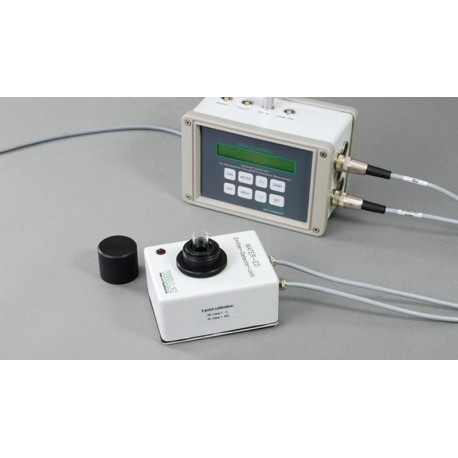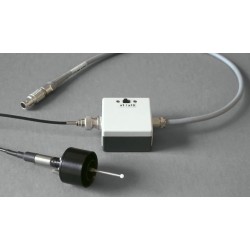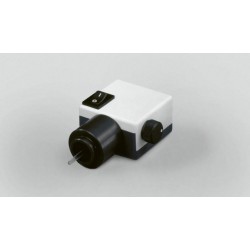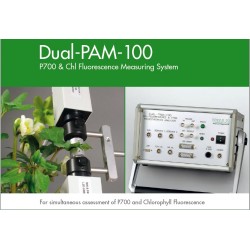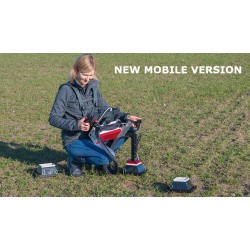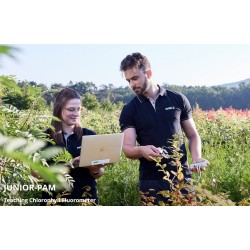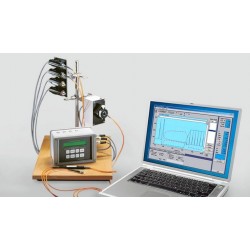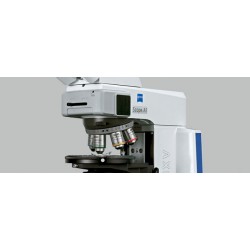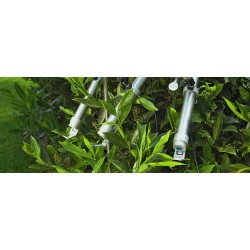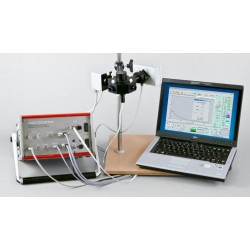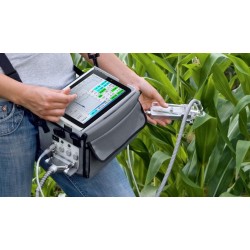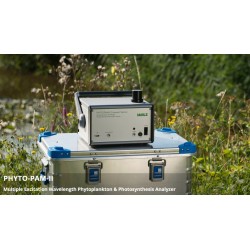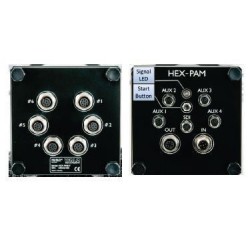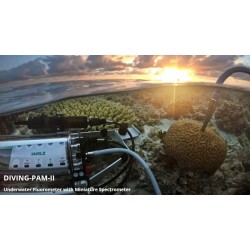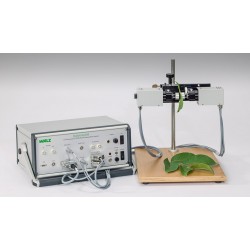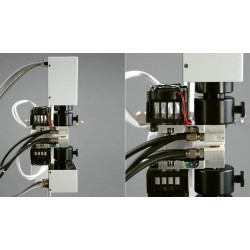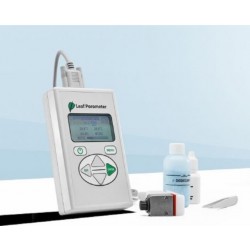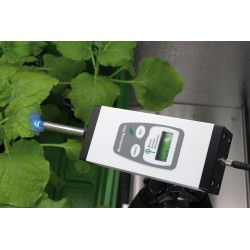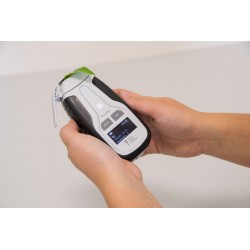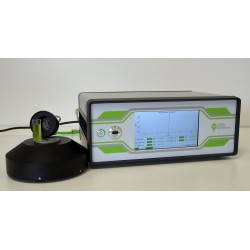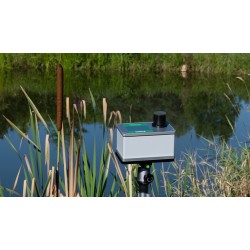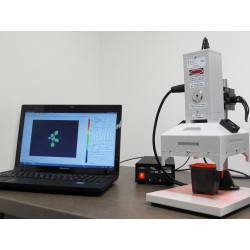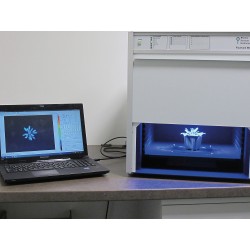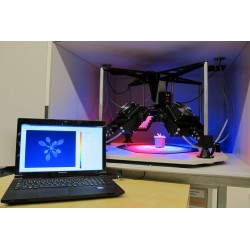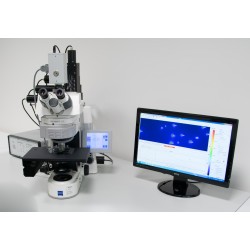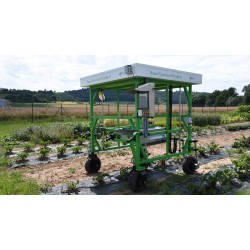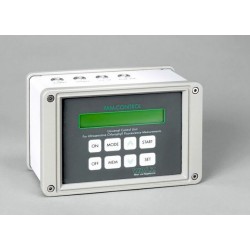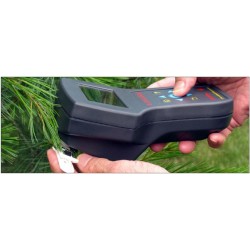No products
Prices are tax excluded
Product successfully added to your shopping cart
There are 0 items in your cart. There is 1 item in your cart.
WATER-PAM Chlorophyll Fluorometer for Dilute Samples
WATER-PAM
New
◆ The WATER-PAM is the PAM fluorometer of choice when very low chlorophyll contents of samples require outstandingly sensitive fluorescence detection. The three different types of the WATER-PAM are designed to analyze suspension samples, surfaces, or a continuous water flow, respectively.
◆ The parameters measures are chlorophyll content and photosynthetic activity. All WATER-PAM chlorophyll fluorometers can be operated in the stand-alone mode which facilitates measurements in the field.
- More info about this product.
- Remove this product from my favorite's list.
- Add this product to my list of favorites.
| Type of Instrument | Chlorophyll Fluorometers |
| The instrument measures: | Chlorophyll Fluorescence |
► The WATER-PAM chlorophyll fluorometers achieve outstanding sensitivity by fluorescence detection with a particularly red-sensitive photomultiplier combined with special preamplifier electronics. In this way, detection limits for suspensions down to 0.1 µg chlorophyll/liter are achieved.
► Damage to the susceptible photomultiplier tube by external radiation is averted by an automatic switch-off circuit. Consequently, the photomultiplier tube is shielded from external light during measurements.
► A further feature of WATER-PAM chlorophyll fluorometers is that they can be operated independently from line connection and computer by the battery-powered PAM-CONTROL unit.
► The same PAM-CONTROL unit functions as a physical interface between measuring unit and computer for operation of the WATER-PAM by the WinControl software.
CUVETTE Version
Emitter-Detector Unit
WATER-ED (red)
Design: Metal housing with LED array, photomultiplier, pulse signal preamplifier and cables connecting to photomultiplier (PM) and AUX output sockets of PAM‑CONTROL unit. Featuring measuring chamber with 15 mm diameter quartz cuvette
LED Array: Pulse modulated measuring light, three LEDs peaking at 650 nm. Actinic light/saturation pulses, 12 LEDs peaking at 660 nm. Far-red light, three LEDs peaking at 740 nm. Alternative to far-red light, blue LEDs (460 nm) can be build in for preferential PS I excitation in cyanobacteria. Actinic intensity up to 2000 µmol quanta m‑2s‑1 of photosynthetically active radiation (PAR). Saturation pulse intensity up to 4000 µmol quanta m‑2s‑1
Signal detection: Photomultiplier detector based on Photosensor Module H‑6779‑01 (Hamamatsu) with high red sensitivity; featuring pulse preamplifier and automatic overload switch-off; fluorescence detection at wavelengths > 710 nm
Dimensions: 11 cm x 9 cm x 8 cm (L x W x H)
Weight: 600 g (incl. cable 0.6 m long)
Emitter-Detector Unit
WATER-ED/B (blue)
Identical to Emitter-Detector Unit WATER-ED except:
LED Array: Pulse modulated measuring light, three LEDs peaking at 460 nm. Actinic light/saturation pulses, 10 LEDs peaking at 460 nm. Far-red light, three LEDs peaking at 740 nm
FIBER Version
Emitter-Detector Unit
WATER-EDF1.5R (red)
Design: Metal housing, containing LED-light sources, photomultiplier detector, pulse preamplifier, and port with lateral plastic screw for fixation of fiber optics. Permanently attached data cables connecting to photomultiplier (PM) and AUX output sockets of PAM‑CONTROL unit. Equipped with mounting rod for fixing the housing and on the stand ST‑101.
Fiber optics: Three 1.5 mm diameter plastic fiber optics (lengths 200, 600 and 1200 mm).
LED Sources: LED-array for pulse modulated, red fluorescence measuring light (620 nm), red actinic light and saturation pulses (635 nm), as well as blue actinic light (460 nm) for preferential PS I excitation in cyanobacteria. Alternative to blue light, far-red LEDs (730 nm) can be build in for preferential PS I excitation in non-cyanobacterial photosynthetic organisms. Actinic intensity up to 1500 µmol quanta m‑2s‑1 of photosynthetically active radiation (PAR). Saturation pulse intensity up to 3000 µmol quanta m‑2s‑1
Signal detection: Photomultiplier detector based on photosensor module H‑6779‑01 (Hamamatsu) with high red sensitivity, featuring pulse preamplifier and automatic overload switch-off; fluorescence detection at wavelengths > 710 nm
Dimensions: 11.5 cm x 9 cm x 5.5 cm (L x W x H)
Weight: 550 g (incl. cable 0.6 m long)
Emitter-Detector Unit
WATER-EDF1.5B (blue)
Identical to Emitter-Detector Unit WATER-EDF1.5R except:
LED Sources: LED-array for pulse modulated, blue fluorescence measuring light (460 nm), blue actinic light and saturation pulses (460 nm), as well as far-red light (740 nm) for preferential PS I excitation
FLOW THROUGH Version
Emitter-Detector Unit
WATER-FT/R (red)
Design: Cylindrical housing made of black polyoxymethylene plastic (POM) consisting of water-tight emitter-detector compartment and measuring compartment. The measuring compartment is equipped with in-/out connectors for externally pumped water and a port for the spherical PAR sensor US-SQS/WB. The unit is mounted on an angle metal for fixation on solid surface.
LED Sources: LED-array for pulse modulated fluorescence excitation with red light (635 nm) as well as for actinic illumination with actinic light intensity up to 2000 µmol quanta m‑2s‑1
Signal detection: Photomultiplier detector based on photosensor module H‑6779‑01 (Hamamatsu) with high red sensitivity, featuring pulse preamplifier and automatic overload switch-off. Fluorescence detection is at wavelengths > 710 nm
Dimensions: 15 cm x 12.5 cm x 13 cm (L x W x H)
Weight: 1450 g (incl. cable 1.5 m long)
Emitter-Detector Unit
WATER-FT (blue)
Identical to emitter-detector unit WATER-FT/R except:
LED Sources: LED-array for pulse modulated fluorescence excitation with blue light (460 nm) as well as for actinic illumination with blue light.
PAM-CONTROL
Universal Control Unit PAM-CONTROL
For control of Photomultiplier-detector PM-MF and LED
General Features
Data memory: 128 kB CMOS RAM providing memory for 4000 data sets
Microcontroller: CMOS 80C52
Display: 2 x 24 character alphanumerical LC-display with backlight
User interface: 2 x 4 touch-sensitive keys to operate the internal mode menu
Measured parameters: Fo, Fm, Fm', F, Fv/Fm (max. Yield), ΔF/Fm' (Yield), qP, qN, NPQ, PAR (using special micro quantum sensor), ETR (i.e. PAR x ΔF/Fm')
General Design
Power supply: Internal rechargeable battery 12 V/2 Ah, providing power for at least 10 000 Yield measurements, automatic power/off, battery charger MINI-PAM/L (100 to 240 V AC)
Dimensions: 17.6 cm x 11.5 cm x 9.5 cm (L x W x H)
Weight: 2 kg (incl. battery)
Operating temperature: -5 to +45 °C
CUVETTE Version
The emitter-detector unit, of the CUVETTE version features a cylindrical holder for a 15 mm diameter quartz glass cuvette (WATER-K). The cuvette is surrounded by light-emitting diodes (LED) delivering PAM measuring light and actinic illumination to the sample.
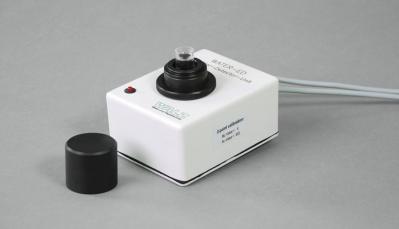
Detection of fluorescence at wavelengths longer than 710 nm occurs at the bottom of the cuvette. Best results are achieved using sample volumes between 2 and 3 ml.
The emitter detector unit is available with two different LED colors. The blue LED version (WATER-ED/B) exhibits lowest stray light interference. This WATER-ED/B has additional far-red LEDs light source for fast PS I-driven opening of PS II reaction centers required for evaluations of Fo’ fluorescence levels.
The red LED version (WATER-ED) is frequently used to analyze cyanobacteria which tend to absorb inefficiently in the blue: this version is available with far-red or blue photosystem I light.
FIBER Version
The FIBER version probes surfaces of solid objects by using an optical fiber. Typically the FIBER version is employed to examine photosynthetic layers on various submerged surfaces (periphyton, microphytobenthos) and soil crusts but also to screen samples on microwell plates.
The FIBER version is less sensitive than the CUVETTE and FLOW THROUGH version so that for toxicity biotest systems a chlorophyll concentrations around 100 - 500 µg chlorophyll/liter is recommended.
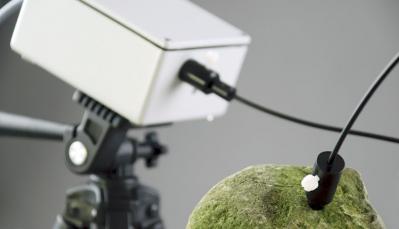
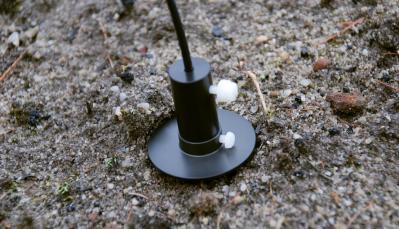
As in the case of the CUVETTE version, the emitter-detector unit of the FIBER version can be equipped with different-colored LEDs: the WATER-EDF1.5R uses red measuring and actinic light but these light sources are replaced by blue LEDs in the WATER-EDF1.5B.
The WATER-EDF1.5R is configured with an additional blue light source to selectively excite the photosystem I in cyanobacteria or, alternatively, with a far-red light source for photosystem I excitation in many other photosynthetic organisms.
FLOW THROUGH Version
The FLOW THROUGH version of the WATER-PAM has a water-proof emitter-detector unit exhibiting a transparent window through which measuring and actinic light is emitted.
Fluorescence detection occurs through another transparent window at right angles with the window for light emission. The optical windows are positioned within a black cylinder with inlet and outlet connections.
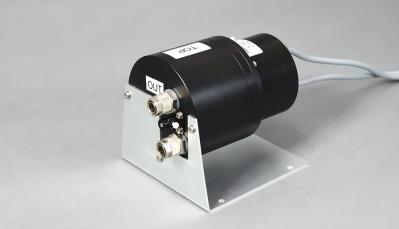
The two connections permit continuous fluorescence monitoring when a commercial water pump is connected to the outlet and a sampling hose placed in the reservoir to be examined.
Because of its capacity for continuous analysis, the major applications of FLOW THROUGH version are in the field of limnology, oceanography, water management and drinking water monitoring.
The FLOW THROUGH version is equipped with either red (WATER-FT/R) or blue LEDs (WATER-FT). The former configuration is suited for detection of cyanobacteria with weak absorption in the blue, the latter one exhibits particularly low background signals and can be used when green algae or diatoms are to be analyzed.
Additional light sources for specific excitation of photosystem I are omitted because of too short residence times of samples in front of the emission detection window.
PAM-CONTROL
The PAM-CONTROL unit can conduct independently PAM fluorescence measurements but it can also act as physical interface between fluorometer and computer using WinControl V. 2 software. The PAM-CONTROL unit is specialized to operate various extremely sensitive setups for chlorophyll fluorescence measurements: the MICROSCOPY-PAM, the MICROFIBER-PAM and the WATER-PAM.
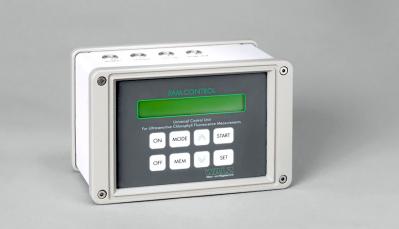
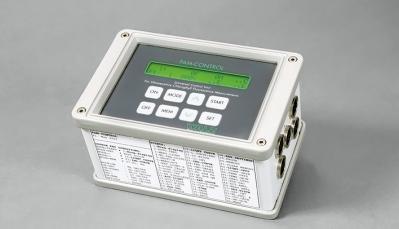
Common to these three setups is the use of the same light-emitting-diodes (LED) as sources of measuring and actinic light, as well as for saturation pulses. Also, all setups use ultrasensitive photomultipliers: as a consequence, they are not suited for operation in the presence of non-modulated background light which would interfere with chlorophyll yield determinations.
The capacity of data storage comprises 4000 data sets. An extensive menu provides full control of instrumental settings and a variety of measuring protocols.

